This post may contain affiliate links. Please read our disclosure policy. As an Amazon Associate, I earn from qualifying purchases.
Our Gluten Free Pie Crust is flaky and buttery, with an incredible texture and taste that is just like a traditional pie crust. In fact, no one will even know it’s gluten-free! Use this foolproof recipe to make a single or double pie crust. We’re including all of our favorite tips to getting the gluten-free pie crust dough just right!
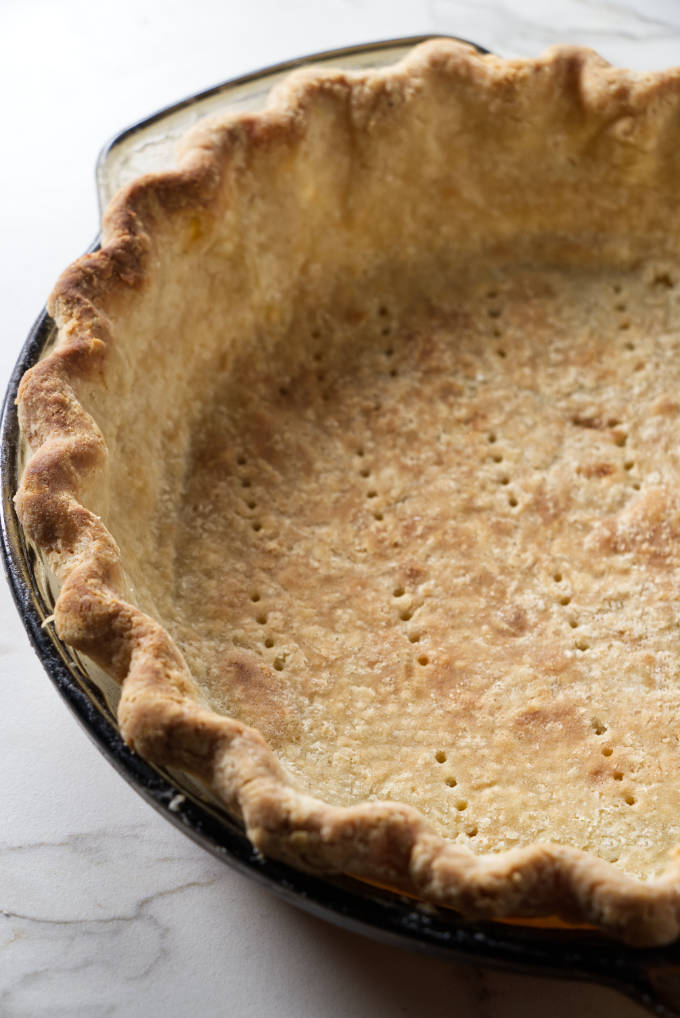
Swap this recipe in for any of our classic pies for an easy, gluten-free version. Our Butterscotch Cinnamon Pie, this Caramel Apple Pie, or a fruity treat like Blackberry Peach Pie all work beautifully in this gluten-free pie crust. In fact, you can take almost any of your favorite pies and use this recipe to make it gluten-free!
While we’re major fans of our all-butter pie crust, this graham cracker crust recipe, and this brown sugar pecan pie crust, everyone needs a gluten-free pie crust recipe in their back pocket.
Why This Recipe Works:
This gluten free pie crust uses a mix of butter and vegetable shortening which makes the dough a little easier to work with. We’ve also added egg and sour cream to give the dough structure and tender consistency.
Plus, a pinch of baking powder helps the dough puff up. That means a buttery, flakier texture that everyone- gluten free or not- will enjoy!
This gluten-free pie crust is:
- simple to make
- flaky and tender
- Works with any kind of filling- sweet or savory
- tasty and indistinguishable from a regular pie crust
The Ingredients:
Our gluten-free pie crust recipe requires less than 10 ingredients and only 20 minutes to prepare. You can even prep it in advance of a special holiday and pre-bake the crust or partially bake it.
To make this gluten-free pie crust, you will need:
- Gluten-free flour. Use an all-purpose gluten free flour blend. We provided a list of the different flour blends that we used to test this recipe. We also used our own whole grain gluten free flour with this recipe.
- Salt.
- Xanthan gum. If the flour blend that you use already has xanthan gum, you can omit this ingredient.
- Baking powder. The baking powder provides “lift” which adds to the flakey texture of the pie crust.
- Butter. Butter gives this pie crust its flavor and helps it stay flakey.
- Vegetable shortening. Adding vegetable shortening helped make this pie crust easier to handle and gave it a tender texture. If you can’t stomach vegetable shortening, you can replace it with more butter.
- Sour cream. Sour cream helps tenderize the crust and makes it easier to roll out and shape.
- Eggs. Eggs bind the pie dough together. Since this recipe has no gluten, the eggs are essential to keep the dough together and prevent it from falling apart as you roll it out. We found that the eggs had even more binding power than the xanthan gum.
- Ice water
If you’ve never used xanthan gum, it’s a binding ingredient that is commonly found in gluten-free baked goods. It is optional in this recipe but it gives the crust a bit more flexibility and makes it easier to handle.
Xanthan gum can be found in many grocery stores in the baking aisle. It’s a key ingredient to getting the very best gluten-free pie crust recipe!
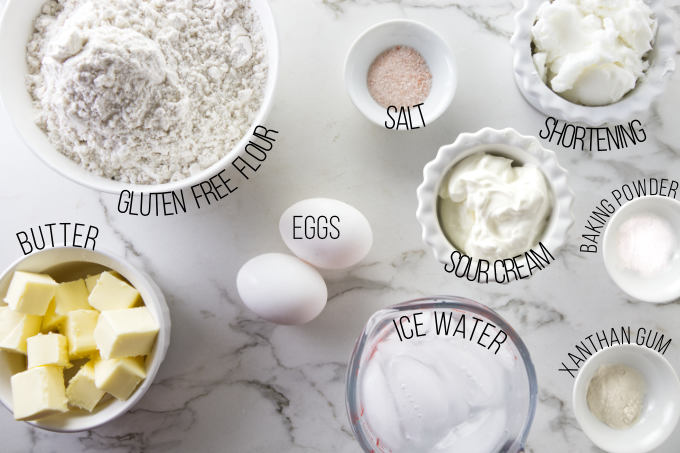
How to Make a Gluten-Free Pie Crust:
To make our gluten-free crust, follow the instructions below. Make sure you scroll to the bottom of the page to read the full details and ingredient amounts, along with the instructions for a single and double pie crust.
- Combine the dry ingredients: Stir together the dry ingredients. Cut the butter and shortening into the flour.
- Add the wet ingredients: Stir in the sour cream and egg, then slowly drizzle the ice water into the mixture.
- Shape and chill: Roll the dough into a ball and shape it into a disk. Let it chill in the fridge.
- Roll out the gluten-free dough: Roll it out on a floured surface and transfer it to your pie dish.
- Bake the gluten free pie crust: We have directions in the recipe card if you want to pre-bake the crust.
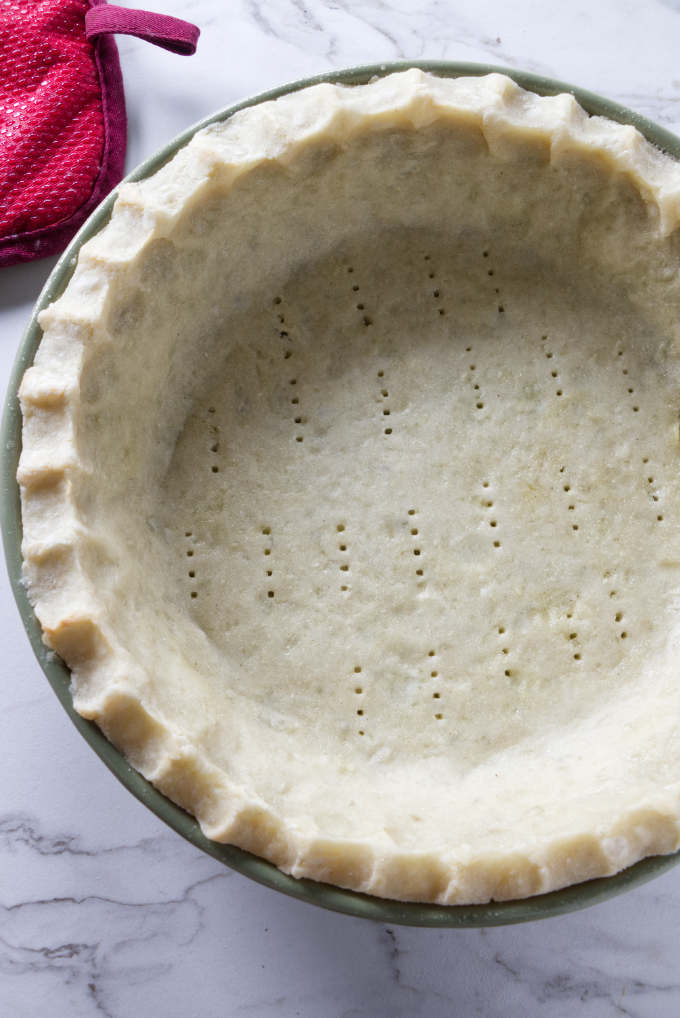
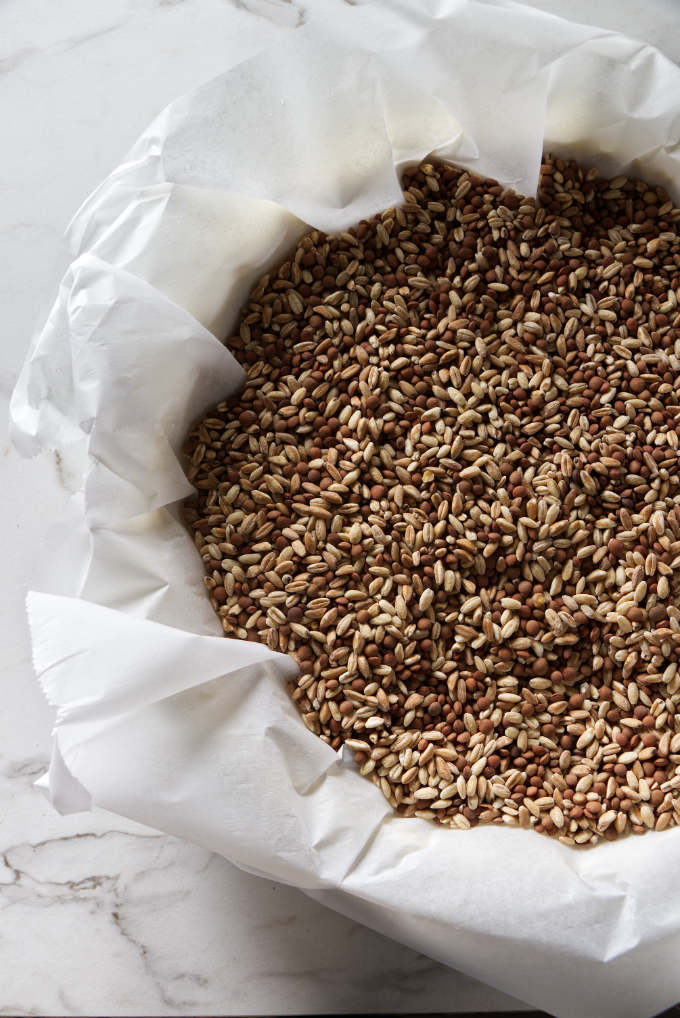
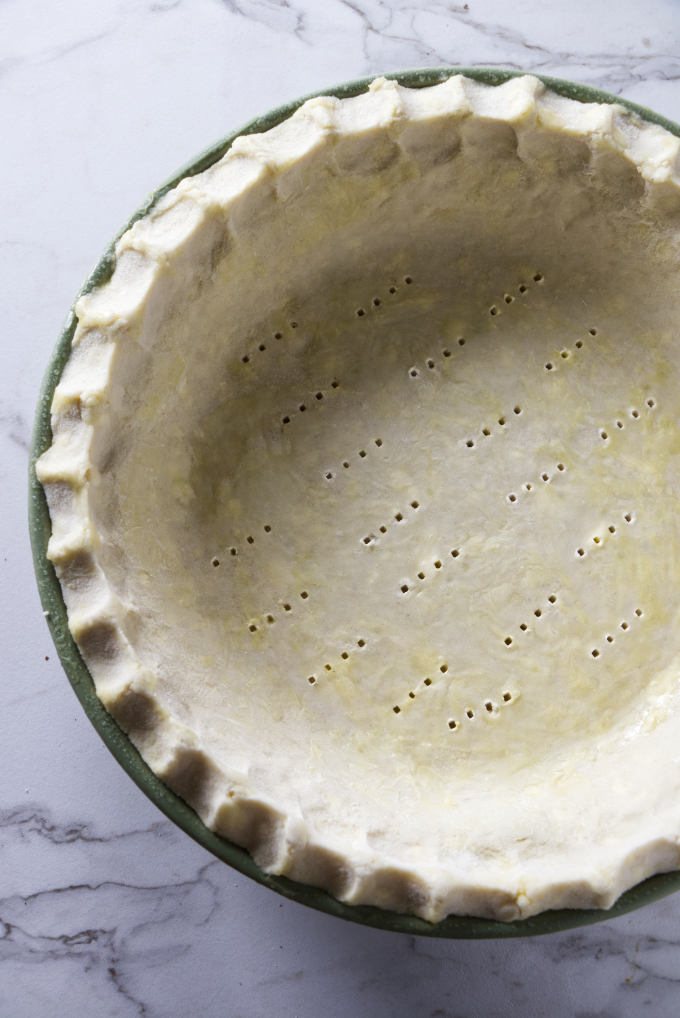
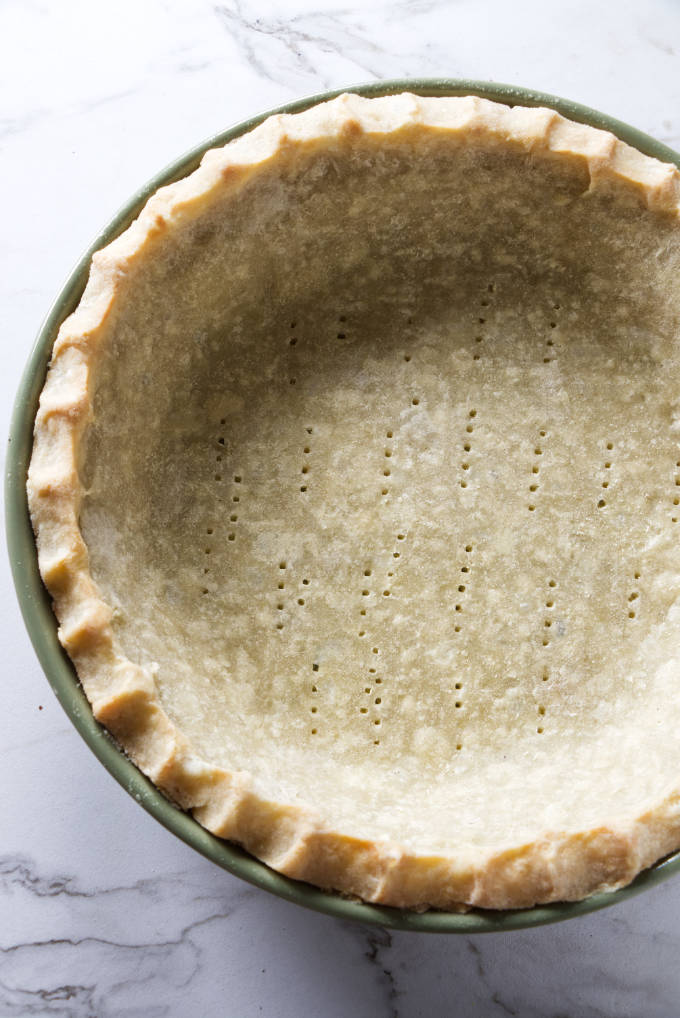
Recipe Tips for the Best Results:
- Gluten-free pie dough requires a little bit more liquid than a traditional pie crust. Since there is no gluten in the flour, you don’t have to worry about the water making the crust tough. However, you don’t want the dough to be sticky. To remedy sticky dough, just sprinkle in a little bit of extra flour.
- Use ice water. Adding ice water to the dough will keep the fats solid. Add the water in small increments so you don’t add too much.
- Each brand of gluten free flour has varying amounts of flour blends. Each of the different blends will absorb liquid differently. This means you may need to adjust the amount of water you use to get the dough to form a ball.
- A whole grain flour blend will create a dough that is slightly more delicate to handle. We recommend using a flexible cutting mat to transfer the dough. If the dough cracks when transferring to the pie plate, pinch it together or patch it with extra dough.
- Dust the dough with flour when you roll it out. Turn the dough frequently and continue to give it a light dusting of flour as you roll.
- Avoid overbaking the crust. If you over-bake the crust or you don’t add enough liquid to the dough, the crust may end up tough.
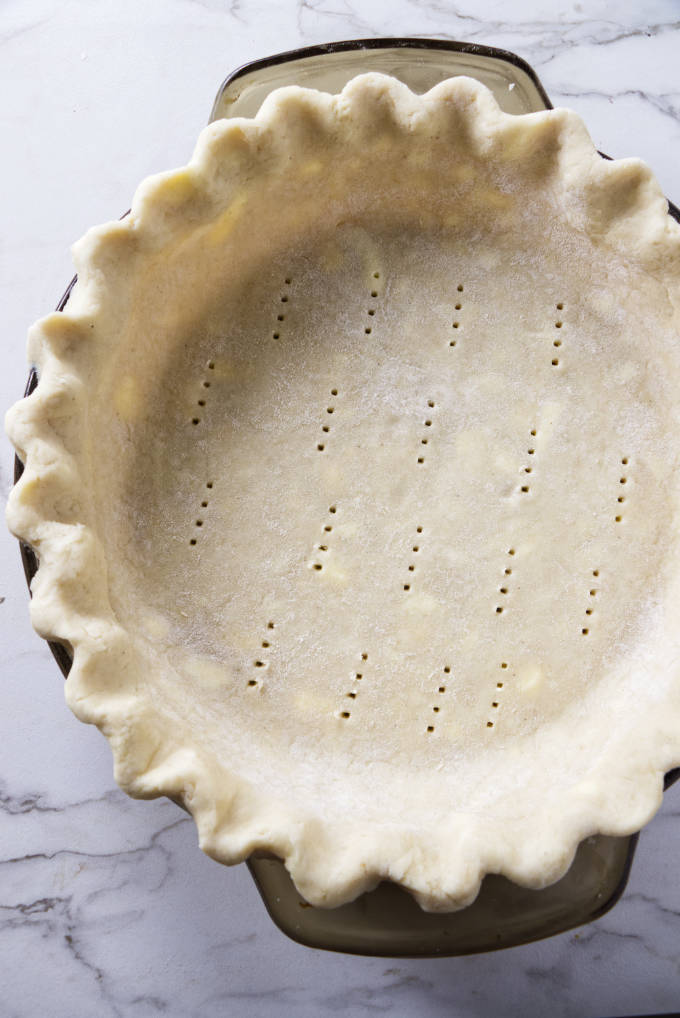
Whether you’re in search of a gluten-free pie for the holidays or any other special occasion, this gluten free pie crust recipe creates amazing results! It meets all of the requirements of a delicious pie crust. It’s buttery, flaky, and is easy to work with and shape.
Best of all, the taste is on point and no one will ever even know it’s gluten free!
More Recipes You Will Love:
Brown butter, bourbon and peaches make a wonderful combination that gives this fresh peach pie a rich depth of flavor with a hint of sweet molasses.
A classic sweet potato pie gets a toasted marshmallow topping, which makes this favorite holiday pie next-level YUMMY.
And our sourdough pie crust is a great way to use your sourdough starter.
Pin this now to find it later!
Pin It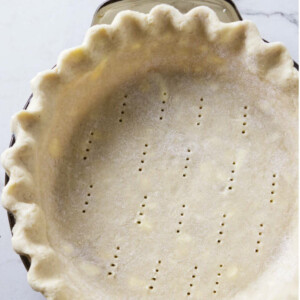
Gluten Free Pie Crust
If you make this recipe, please leave a star rating and comment.
Ingredients
Single Crust Pie
- 1 ⅓ All-purpose gluten-free flour blend, 208 grams
- ½ teaspoon salt
- ¼ teaspoon xanthan gum
- ¼ teaspoon baking powder
- 6 tablespoons butter, cold
- 2 tablespoons vegetable shortening, chilled
- ¼ cup sour cream
- 1 large egg
- 1 to 4 tablespoons cold water
Double Crust Pie
- 2 ⅔ All-purpose gluten-free flour blend, 156 grams
- 1 teaspoon salt
- ½ teaspoon xanthan gum
- ½ teaspoon baking powder
- 12 tablespoons butter, cold
- ¼ cup vegetable shortening, chilled
- ½ cup sour cream
- 2 large eggs
- 2 to 8 tablespoons cold water
Instructions
- Combine the flour, salt, xanthan gum, and baking powder in a bowl. Cut the butter into cubes and toss it into the flour mixture along with the vegetable shortening. Use a pastry blender (or you can use a food processor) to cut the butter into the flour. The mixture should look like coarse cornmeal with pea-size lumps.
- Stir in the sour cream and egg until well distributed into the flour mixture.
- Slowly drizzle the ice water into the mixture 1 tablespoon at a time. Stir the mixture with a rubber spatula after each addition of water. Continue adding water until you can form the dough into a ball.
- If you are making a double-crust pie, cut the ball of dough in half and shape each half into a disk.
- Wrap the dough in plastic wrap and let it chill in the fridge for at least 30 minutes.
To roll the dough out:
- When it is time to roll the dough, let it rest on the counter for 20 to 30 minutes if it is too cold to work with.
- Place the dough on a floured counter. Dust the top of the dough and the rolling pin with more flour.
- Roll the dough into a 12-inch circle. Lift and turn the dough as you roll, keeping the dough lightly dusted with flour.
- Wrap the dough around your rolling pin to transfer it to a pie plate (alternatively, you can slide a thin cutting mat under the dough to lift and transfer it).
- Gently ease the dough into the pie dish by lifting the edges and allowing the dough to fall into the dish without stretching it (if you stretch the dough, it will shrink when you bake it).
- Trim and crimp the edges of the dough. Use a fork to prick holes in the bottom of the pie shell if you plan to pre-bake the crust.
To pre-bake the pie crust:
- Place the pie shell in the freezer for 30 minutes or in the fridge for 1 hour or until it gets firm and cold.
- Preheat the oven to 400°F
- Line the pie shell with parchment paper and fill it with pie weights.
- For a partially baked crust, bake for 8 to 12 minutes then transfer to a cooling rack and remove the pie weights.
- For a fully baked crust, bake for 8 to 12 minutes then remove the pie weights and continue baking for another 10 to 17 more minutes or until the crust is light golden brown (Optionally, you can leave the pie weights in the shell for the entire baking time, however, the crust will not get quite as brown).
- Transfer the pie shell to a cooling rack and let cool at room temperature.
Notes
- Gluten-free pie dough requires a tad bit more liquid than pie crust that is made with conventional flour. You don’t have to worry about the water making the crust tough since there is not any gluten. However, you don’t want the dough to be sticky. If you add too much water and end up with a sticky dough, just sprinkle in some extra flour.
- Depending on what brand of flour you use, you may need to adjust the amount of water to get the dough to form into a ball. Different brands of gluten-free flour have different combinations of flour blends which will affect how much liquid gets absorbed.
- Xanthan gum is optional but will help make the pie dough a bit easier to handle.
- If you use a flour blend that has whole grains in the blend, the dough will be slightly more delicate to handle. We recommend using a flexible cutting mat to transfer the dough. After you roll the dough out, sprinkle some flour on the cutting mat and slide it under the dough. Lift the mat and hold it over the pie plate then slide the dough off the mat and let it fall into the pie plate.
- If the dough cracks when you transfer it to the pie plate, just pinch it together or patch it with extra dough.
- We found that over-baking the pie crust or not adding enough liquid resulted in a tough crust. If you pre-bake the crust, bake it until it is a light golden brown.
- We tested this recipe with the following flour blends. Cup 4 Cup, King Arthur Measure for Measure, and Better Batter all-purpose flour blend (all linked below).
Nutrition
Nutrition information is automatically calculated, so should only be used as an approximation.
 Like this recipe? Rate & comment below!
Like this recipe? Rate & comment below!
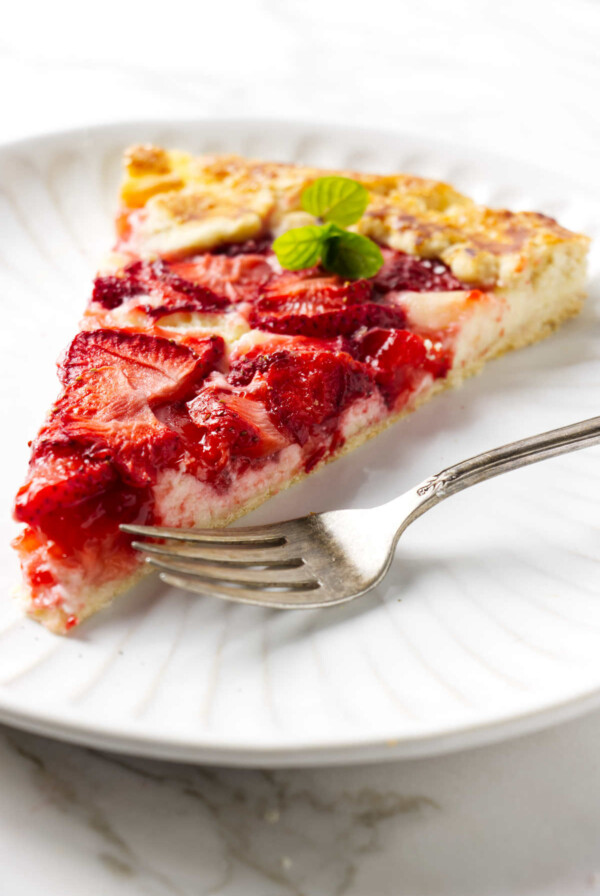
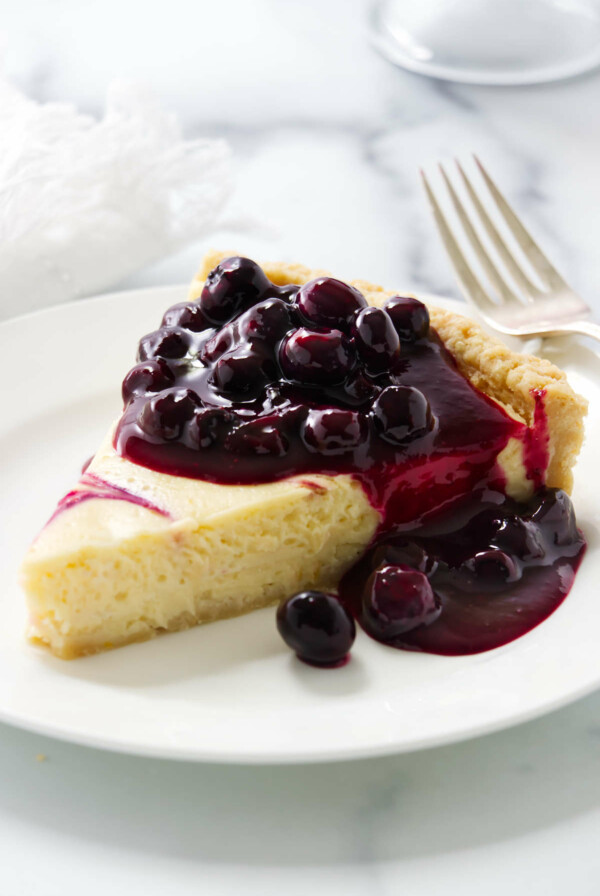
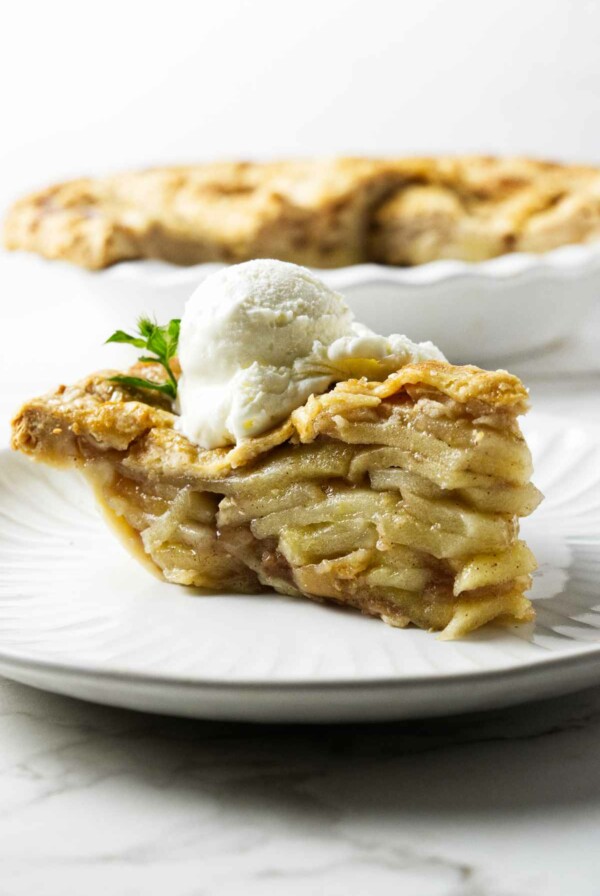
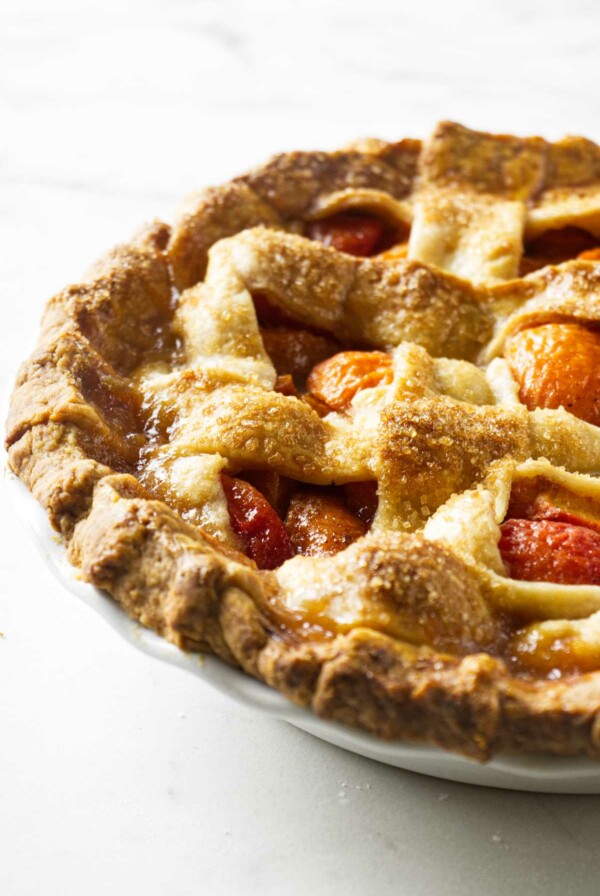










What brand or mix of gluten free flour did you use? I’m getting my ingredients to try it today. Thank you.
Thanks for the question. I tested the recipe with Cup 4 Cup, King Arthur Measure for Measure, and Better Batter all-purpose flour blend. I added links to the bottom of the recipe card. If you want to take a look, just refresh the recipe card and they should show.
How does this recipe not have a long list of stellar reviews??!! I just used your recipe to make an Italian Easter pie. PERFECTION!! You would never know this crust was gluten free; it tastes exactly as how I remember a regular wheat flour crust tasted back before I had to go gluten free. I’m just sorry I’m only finding this recipe now. I tried so many recipes in the past, only to give up on making pies because none of the crusts came out right or tasted good (and got sick of wasting ingredients!). I am so happy, and this will be my go-to recipe from now on. THANK YOU!!! 🙂
Oh, thank you, Patti. This is a fairly new recipe to our site and it was a long time in the making with a lot of testing. Thank you for your comment.
If I were to bake an apple pie would I partially bake the crust before I put in the filling?
You can. Partially baking the crust will definitely give you an assurance that you will not have a soggy crust. Another option is to bake it using the method I outlined in our caramel apple pie. I put the oven rack in the bottom third of the oven and baked it at a higher temperature for the first 20 minutes. Either method works but if you aren’t confident with your oven calibration then I would recommend partially baking the crust first.